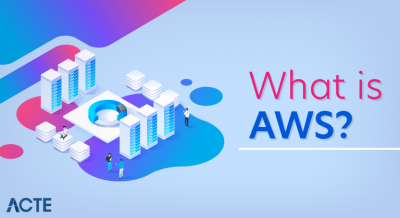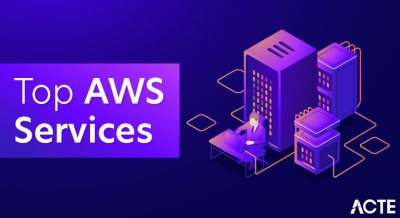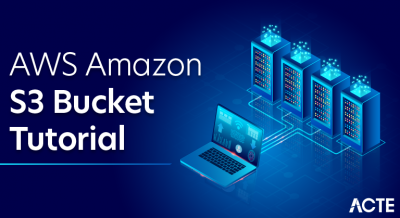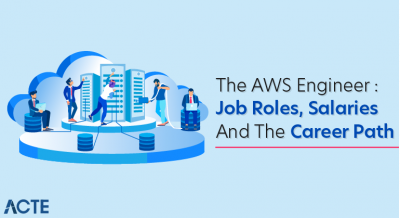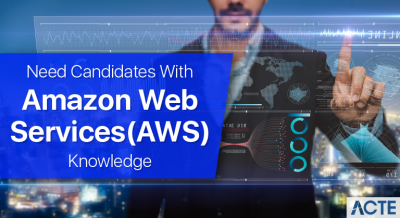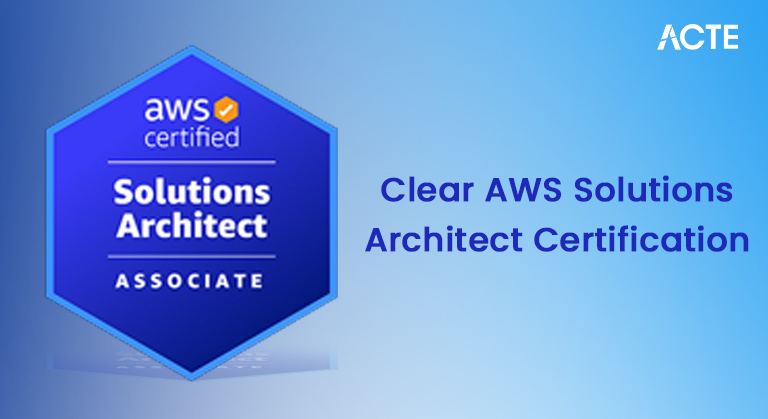
- Introduction to AWS Solutions Architect Certification
- Certification Exam Overview (SAA-C03)
- Key AWS Services for Architects
- AWS Security and Compliance Concepts
- AWS Networking and Content Delivery
- High Availability and Disaster Recovery in AWS
- Cost Optimization Strategies for AWS Architects
- Hands-On Labs and Practice Tests
- Exam Preparation Strategies
- Common Mistakes to Avoid in the Exam
- Career Opportunities After Certification
- Future of AWS Certifications
Introduction to AWS Solutions Architect Certification
The AWS Solutions Architect Certification is one of the most popular and widely recognized certifications in the cloud computing industry. the content delivery network is intended for professionals who design distributed applications and systems on Amazon Web Services (AWS) and aim to validate their knowledge and skills in AWS architecture. AWS certification is highly beneficial for cloud architects, developers, and IT professionals looking to advance their careers in the rapidly growing field of cloud computing.The Amazon Web Services Training Certified Solutions Architect Associate exam (SAA-C03) is designed to validate an individual’s ability to create, deploy, and manage scalable, high-availability systems on AWS. AWS certifications are known for their rigor and comprehensive coverage of AWS services, making them highly regarded by employers in the tech industry.
Certification Exam Overview (SAA-C03)
The AWS Certified Solutions Architect Associate (SAA-C03) exam is a critical credential for anyone looking to demonstrate competence in designing and deploying cloud-based systems. The exam covers various topics related to AWS services, cloud infrastructure, and architectural best practices.
Exam Details:
- Duration: 130 minutes
- Question Format: Multiple-choice and multiple-answer questions
- Cost: USD 150
- Passing Score: 720 out of 1000
- Delivery Method: Online proctored or at a testing center
- Validity:The certification is valid for three years
The exam assesses your ability to:
- Design resilient and high-availability architectures.
- Define performant and cost-optimized solutions.
- Implement security and compliance AWS Powers Netflix.
- Design and deploy scalable cloud applications.
- Manage and improve the reliability and performance of applications.
Exam Domains:The SAA-C03 exam is divided into four main domains
- Design Resilient Architectures (30% of the exam)
- Design High-Performing Architectures (28% of the exam)
- Design Secure Applications and Architectures (24% of the exam)
- Design Cost and Operationally Efficient Architectures (18% of the exam)
- Content delivery network domains focus on ensuring that candidates thoroughly
- understand AWS services and can design robust, secure, and efficient cloud solutions.
Unlock your potential in AWS with this AWS Certification Training .
Key AWS Services for Architects
Amazon Web Service offers a comprehensive suite of services fundamental to designing cloud architectures. Familiarity with these services is essential for passing the Solutions Architect exam. Some key services include:
- Amazon EC2 (Elastic Compute Cloud): Used for scalable compute capacity, EC2 instances allow architects to launch and manage virtual servers in the cloud.
- Amazon S3 (Simple Storage Service): A highly scalable storage solution for storing data in the cloud, S3 is commonly used for data backups, website hosting, and more.
- Amazon RDS (Relational Database Service): Managed relational databases such as MySQL, PostgreSQL, and SQL Server, available on AWS via RDS, providing a scalable database solution for your applications.
- AWS Lambda: A serverless compute service that Chttps: Top AWS Certifications for Cloud Professionals you to run code without provisioning servers, simplifying the architecture and reducing operational overhead.
- Amazon VPC (Virtual Private Cloud): A key networking service that allows you to create a private network within AWS, with control over IP address ranges, subnets, and route tables.
- Amazon Route 53: A scalable Domain Name System (DNS) service used to route traffic to resources in AWS.
- AWS IAM (Identity and Access Management): A service for managing access control, ensuring that users, groups, and roles have the correct permissions for your AWS resources.
- Amazon CloudFront: A content delivery network (CDN) that speeds up the distribution of static and dynamic web content to users.
- Amazon CloudWatch: Provides monitoring and observability for your AWS resources and applications, helping architects track performance and troubleshoot issues.
- AWS Auto Scaling: Automatically adjusts capacity to maintain performance and minimize cost by scaling Amazon EC2 instances up or down based on demand.
AWS Security and Compliance Concepts
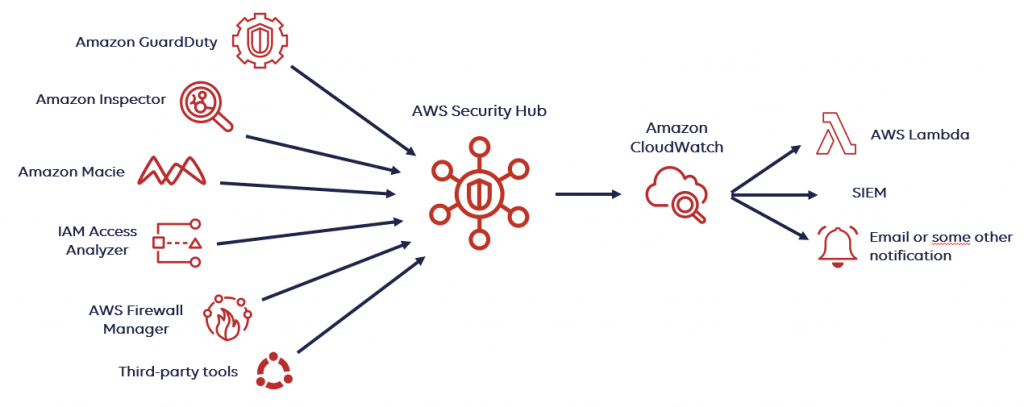
Security is a critical aspect of cloud architecture, and AWS provides numerous tools and features to ensure data protection and compliance. Some important AWS security and compliance concepts for Solutions Architects include, Shared Responsibility Model Amazon Web Service and the customer share security responsibility. Domain Name System manages the protection of the cloud infrastructure, while customers are responsible for securing their applications, data, and access controls. AWS Shield Provides DDoS protection to safeguard AWS applications from large-scale attacks.
Learn how to manage and deploy AWS services by joining this AWS Certification Training today.
AWS Networking and Content Delivery
Networking is a key area for architects to understand when building cloud solutions. AWS offers a variety of tools and services for managing networks, ensuring secure communication, and delivering content globally. Key networking services include: Amazon VPC allows architects to build isolated virtual networks within AWS and provides control over IP address ranges, routing, and security groups.
- Elastic Load Balancing (ELB): Distributes incoming application AWS Management Console across multiple targets, such as EC2 instances, to ensure high availability and fault tolerance.
- AWS Direct Connect: Provides a dedicated network connection from your on-premises data center to AWS, improving network performance and reliability.
- Amazon CloudFront: A content delivery network service that speeds up the delivery of static and dynamic content, such as HTML, CSS, images, and videos, to end-users worldwide.
- AWS Transit Gateway: Simplifies the management of multiple VPCs and on-premises networks, acting as a central hub for routing traffic.
High Availability and Disaster Recovery in AWS
One of the key principles of AWS architecture is ensuring high availability and disaster recovery (DR) capabilities. Domain Name System offers multiple services and strategies to ensure your applications remain available and resilient in the event of failures:
- Availability Zones: AWS operates multiple Availability Zones (AZs) within regions, allowing architects to deploy applications in multiple geographically separated locations to ensure fault tolerance.
- Elastic Load Balancing (ELB): ELB can automatically distribute traffic across healthy instances in multiple AZs to ensure high availability.
- Amazon RDS Multi-AZ: For high availability and automatic failover, Amazon RDS supports Multi-AZ deployments, ensuring database availability in case of infrastructure failure.
- Amazon S3 Cross-Region Replication: S3 offers cross-region replication to ensure data is available in AWS Training , enhancing durability and disaster recovery.
- Amazon Web Service Backup: Simplifies and automates backup tasks for AWS services, ensuring data can be restored in case of a disaster.
- AWS Elastic Beanstalk: A platform-as-a-service (PaaS) solution that automatically scales your applications and provides high availability with minimal management.
Looking to master Cloud Computing? Sign up for ACTE’s Cloud Computing Master Program Training Course and begin your journey today!
Cost Optimization Strategies for AWS Architects
Cost optimization is a critical aspect of AWS architecture. AWS Architects can minimize costs by using the right services, designing for efficiency, and monitoring usage while maintaining the required performance. Key strategies for cost optimization include:
- Right-Sizing: Selecting the appropriate instance types and sizes based on workload requirements ensures that resources are not over- or under-utilized.
- Auto Scaling: Automatically adjusting the number of instances based on demand ensures that you only pay for the resources you use.
- Spot Instances: Using EC2 Spot Instances for non-critical workloads can reduce costs by utilizing unused capacity at a lower price.
- AWS Cost Explorer: A tool for tracking and analyzing AWS usage and costs, helping AWS Architects identify opportunities for cost savings.
- Reserved Instances: Purchasing EC2 Reserved Instances or RDS Reserved Instances for long-term workloads can result in AWS Database Services savings over on-demand pricing.
Hands-On Labs and Practice Tests
Hands-on labs and practice tests are essential for exam preparation. AWS provides various resources, such as, AWS Free Tier , AWS Free Tier offers free access to limited AWS resources, allowing you to gain hands-on experience with various services. AWS Training and Certification AWS offers official training courses and practice exams to help you prepare for the AWS certification exam. Third-Party Labs Platforms like A Cloud Guru and Linux Academy offer guided hands-on labs and practice exams that simulate real-world scenarios and test your skills.
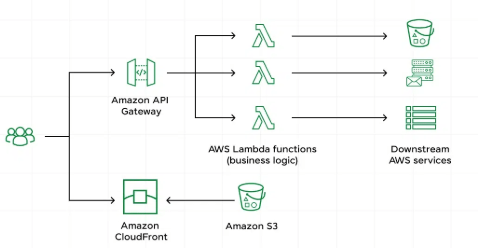
Exam Preparation Strategies
- Study the Exam Guide: AWS provides an exam guide outlining the certification exam topics. Follow this guide closely to ensure comprehensive preparation.
- Hands-On Practice: Using AWS services is the best way to learn them. Experiment with different services and build sample architectures to reinforce your learning.
- Use AWS Whitepapers: Domain Name System publishes many whitepapers that provide in-depth information on best practices, security, and architecture principles.
- Join AWS Study Groups: Join online forums, study groups, or social media communities to discuss topics AWS MSK and share exam preparation tips.
Common Mistakes to Avoid in the Exam
Skipping Hands-On Practice Many candidates fail the exam because they do not have enough hands-on experience with AWS services. Overlooking the Exam Domains is comprehensive, so focus on all the domains, not just the ones you are comfortable with. Misunderstanding the Shared Responsibility Model Be sure to understand the responsibilities of both AWS and the customer regarding security and compliance.
Career Opportunities After Certification
Achieving the AWS Solutions Architect certification opens up various career opportunities, such as:
- Cloud Architect
- Solutions Architect
- AWS Cloud Engineer
- DevOps Engineer
- Cloud Consultant
AWS-certified professionals are in high demand as organizations migrate to the cloud.
Boost your chances in AWS interviews by checking out our blog on AWS Interview Questions and Answers !
Future of AWS Certifications
As cloud adoption continues to grow across industries, AWS certifications will remain a valuable asset for IT professionals. Emerging technologies like AI/ML, serverless computing, and edge computing are expected to be integrated into future certification tracks. AWS may introduce specialized certifications to address AWS Training advanced domains. Continuous learning and upskilling will be key for staying relevant in the cloud job market. Overall, AWS certifications will play a crucial role in validating expertise and opening doors to high-demand cloud careers.

